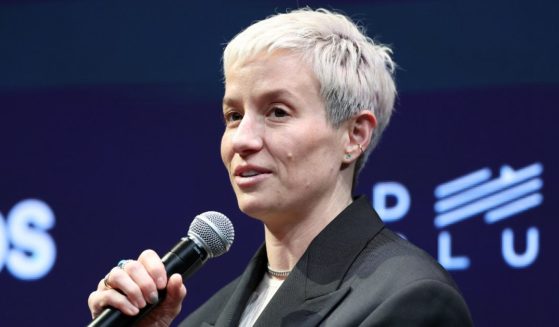Those Solar Panels Libs Said Would Save the Planet Are Too Toxic for Landfills
You know you’re getting old when you can remember plenty of Next Big Things in green energy, sources of power that were going to free us from dirty fossil fuels once and for all and save the planet.
There’s been tidal power, wind energy, hydroelectric power, geothermal energy — I’ve seen them all. I even remember that awful period in the mid-aughts when people were turning those ugly 1970s Mercedes highway cruisers into sputtering biodiesel repair-cost magnets. When it comes to any source of electricity and/or motive power that Ed Begley, Jr. might theoretically get behind, I’ve seen them come and go like some sort of old fogey watching the environmentalist movement from his porch.
The latest candidate for the can’t-fail green energy of the future are solar panels. According to the Center for Climate and Energy Solutions, “Solar generation is projected to climb from 7 percent of total U.S. renewable generation in 2015 to about 36 percent by 2050, making it the fastest-growing electricity source.”
Photovoltaic panels aren’t just for solar farms out in the desert, either. You’ve probably seen a few of them on the roof of that neighbor of yours who’s constantly muttering under his breath about the panel fit on his Tesla. Sure, the sun has been the source of all our energy, but now it looks like we could be getting it directly from there.
Just don’t try tossing these panels in any old landfill.
Last year, Michael Shellenberger wrote a piece for Forbes in which he included several quotes regarding solar panel waste.
One individual said the issue “will explode with full force in two or three decades and wreck the environment” since it “is a huge amount of waste and they are not easy to recycle.”
“The reality is that there is a problem now, and it’s only going to get larger, expanding as rapidly as the PV industry expanded 10 years ago,” another individual said.
“Contrary to previous assumptions, pollutants such as lead or carcinogenic cadmium can be almost completely washed out of the fragments of solar modules over a period of several months, for example by rainwater,” a third group said.
“Were these statements made by the right-wing Heritage Foundation? Koch-funded global warming deniers? The editorial board of the Wall Street Journal?” Schellenberger asked.
“None of the above. Rather, the quotes come from a senior Chinese solar official, a 40-year veteran of the U.S. solar industry, and research scientists with the German Stuttgart Institute for Photovoltaics.”
As solar energy ramps up, so too will the amount of waste the panels leave behind, Shellenberger noted.
In 2016, 250,000 metric tons of waste were produced by solar power. In 2050 — the year that we’re predicted to reach 36 percent solar energy — that could reach a whopping 78 million metric tons.
A study by the Electric Power Research Institute found that “disposal in regular landfills [is] not recommended in case modules break and toxic materials leach into the soil,” meaning “disposal is potentially a major issue.”
Recycling these panels is also a difficult thing.
“Approximately 90 percent of most PV modules are made up of glass,” San Jose State environmental studies professor Dustin Mulvaney said.
“However, this glass often cannot be recycled as float glass due to impurities. Common problematic impurities in glass include plastics, lead, cadmium and antimony.”
And, in areas where solar farms are located, the possibility that toxic chemicals can be washed out of the panels should be of serious concern to locals. Take Fawn Lake in Virginia, where the construction of a solar farm ran into serious opposition from local residents.
“We estimate there are 100,000 pounds of cadmium contained in the 1.8 million panels,” Sean Fogarty of Concerned Citizens of Fawn Lake said.
“Leaching from broken panels damaged during natural events — hail storms, tornadoes, hurricanes, earthquakes, etc. — and at decommissioning is a big concern.”
And this is just in the first world countries where the solar panels are being deployed. In China, where so many of the solar panels are being made, the situation looks a bit more grim.
“The first time Li Gengxuan saw the dump trucks from the nearby factory pull into his village, he couldn’t believe what happened. Stopping between the cornfields and the primary school playground, the workers dumped buckets of bubbling white liquid onto the ground. Then they turned around and drove right back through the gates of their compound without a word,” a 2008 Washington Post article reported.
“This ritual has been going on almost every day for nine months, Li and other villagers said.
“In China, a country buckling with the breakneck pace of its industrial growth, such stories of environmental pollution are not uncommon. But the Luoyang Zhonggui High-Technology Co., here in the central plains of Henan Province near the Yellow River, stands out for one reason: It’s a green energy company, producing polysilicon destined for solar energy panels sold around the world. But the byproduct of polysilicon production — silicon tetrachloride — is a highly toxic substance that poses environmental hazards.”
“The land where you dump or bury it will be infertile. No grass or trees will grow in the place … It is like dynamite — it is poisonous, it is polluting. Human beings can never touch it,” Bingyan Ren, professor with the School of Material Sciences at Hebei Industrial University, told The Post.
Green energy, indeed. Just like every promising technology before it, environmentalists jumped on solar before they realized the collateral damage it would cause. In the meantime, coal is getting cleaner and nuclear power — cleaner and safer than ever before — is always at the ready. But no, neither of these is the flavor of the month.
So, yet again, we have to discover the hard way how chimerical green energy really is, no matter how much in terms of government subsidies we pump into it.
Perhaps in time, solar energy will be viable as a clean energy source. As for right now, however, it’s anything but.
Truth and Accuracy
We are committed to truth and accuracy in all of our journalism. Read our editorial standards.












